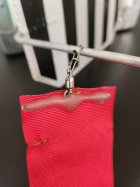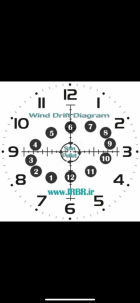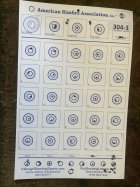I run two different flag spreads, depending on the weather. Ray Hill/Wicks dual vane when dry conditions and Ezell when it's wet conditions. Both are equipped with sail tails, and I carry different weight sail tails, but normally only use the 1.5 tails. I also have .75 tails but rarely use them. If using sail tails, there are things you'll learn about low wind conditions that still make them very viable. With surveyor's tape, they max out way too quickly at a very low velocity. I also have two Ray Hill up/downers and those have surveyor's tape tails. Up/downers work best without the extra weight of a sail tail. I also run a Begg's style wind probe. Sometimes the probe is more important, especially when wind condition is staying consistent from one direction.
Sail tails on Wicks/Hill dual vanes will slow down flag response to wind change direction some, but make up for it in a better visual and more accurate display of velocity. This slower direction change, which is minor, is not an issue if you know that you don't look at your flags only. REPETE, don't only look at your flags! You must look at the flags up wind of other competitors to accurately judge what's coming. Harper has posted on this thread that all flags lie. That is totally incorrect. He also posted they tell what happened, not what is happening, and that is absolutely correct in most situations! The flags didn't lie, they absolutely told the truth after they got acclimated to the new condition, but that condition may have already passed.....maybe. Even the fastest flags will not correct position as fast as it happens. If the wind is in a constant direction for the card, sadly that rarely happens, you'll be fine just doing velocity changes in your hold according to your flags sail tails and or wind probe. If it switches, especially frequently, you better look down the line to see what's happening before you shoot. I don't care how fast your flags switch, small Keeney's with a very light tail being the fastest I know of, you're going to get caught off on a switch if you aren't looking at the rest of the field's flags. You have to look at the big picture when reading wind, and your flags may screw you if that's all you're looking at. I have won several matches by not even looking at my flags. I shot off the flags of the shooter next me after I figured out they were the condition to hold for.
Wind reading is a journey. Several have posted it's time spent on the bench. That is the best way to learn, although having advise from experienced shooters does lessen the learning curve some.
Scott













